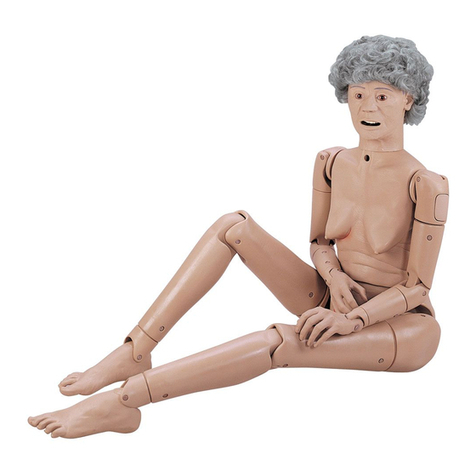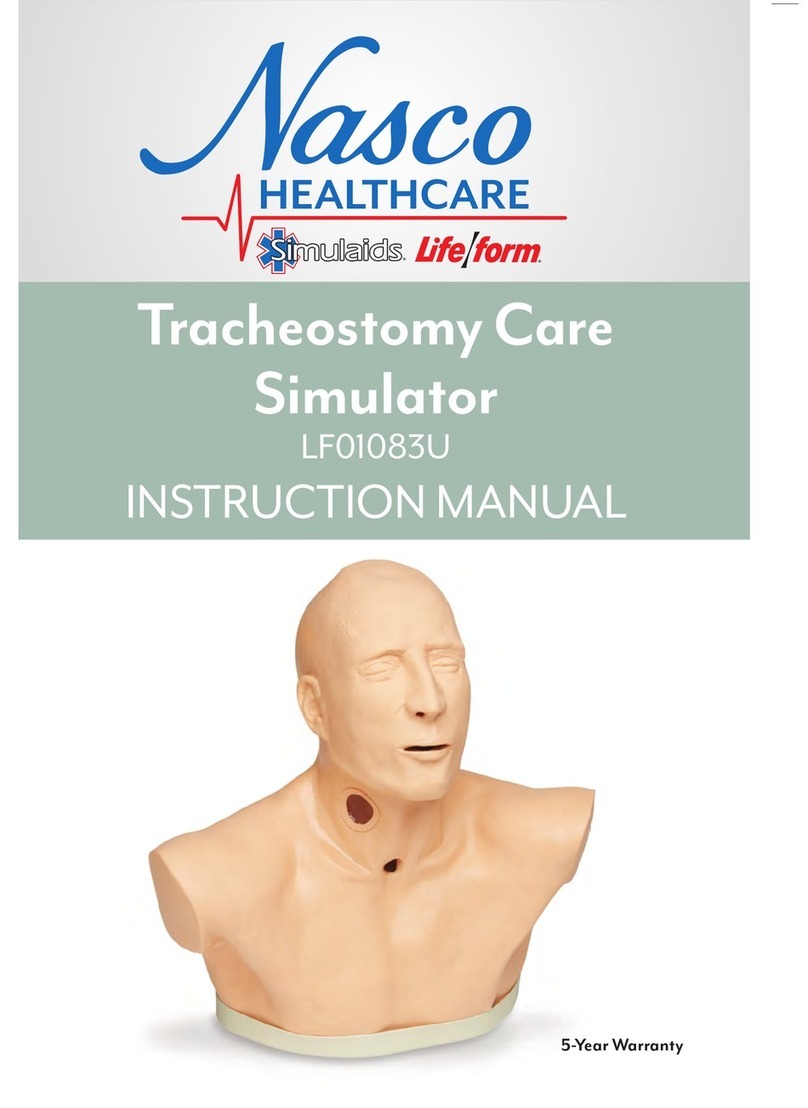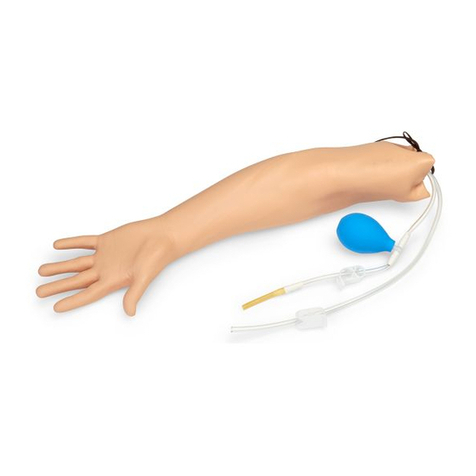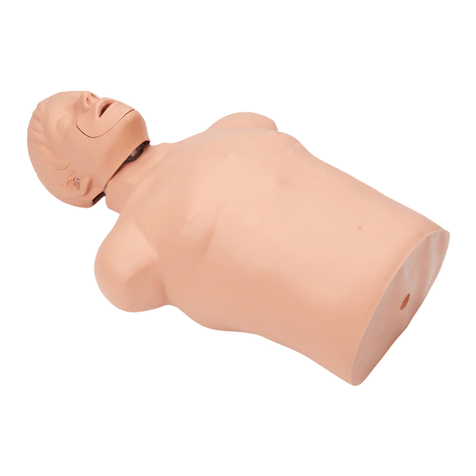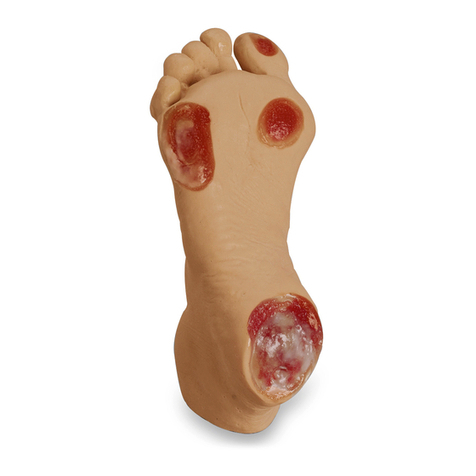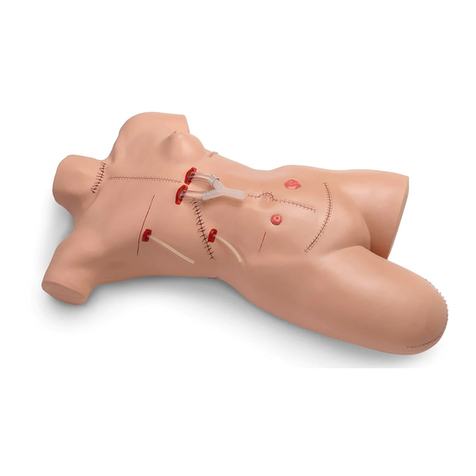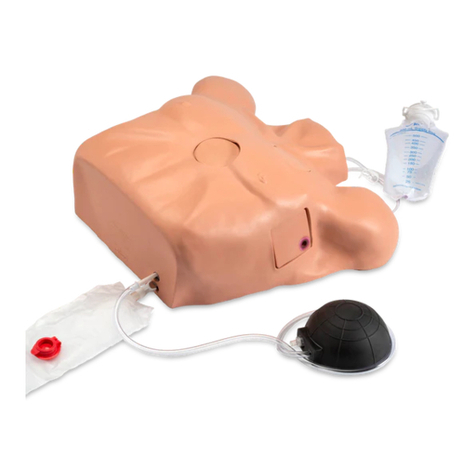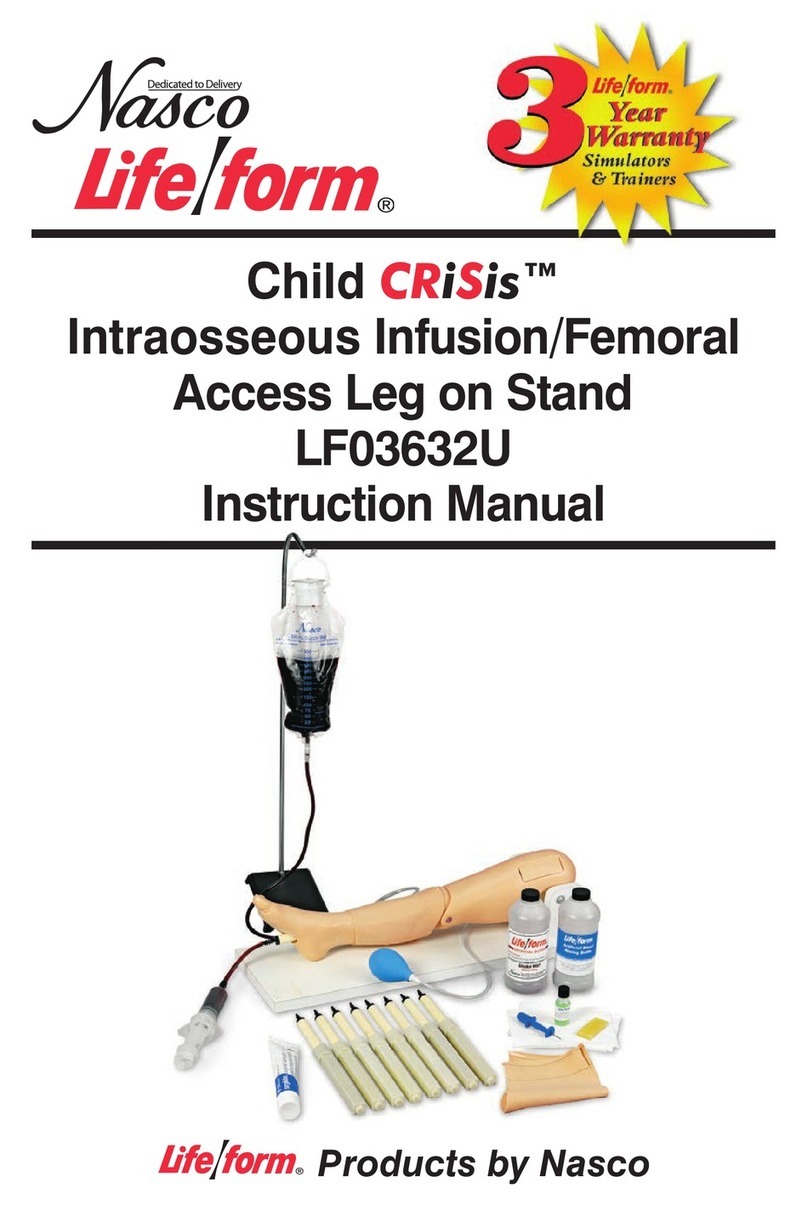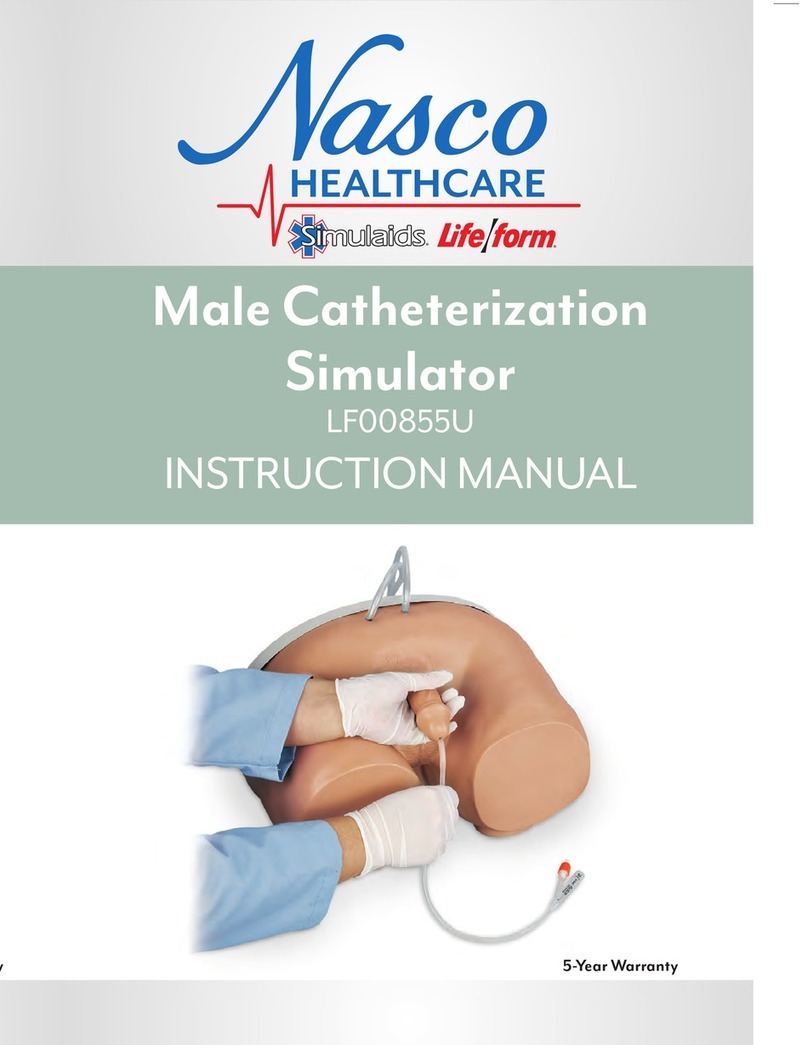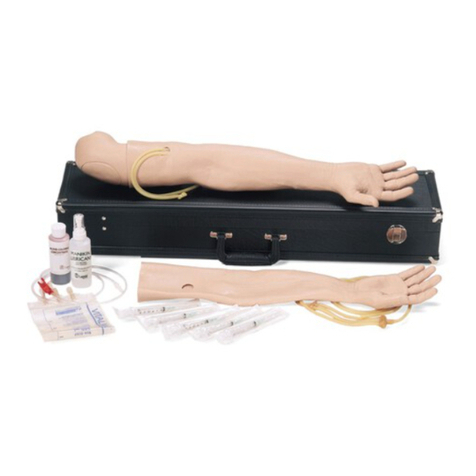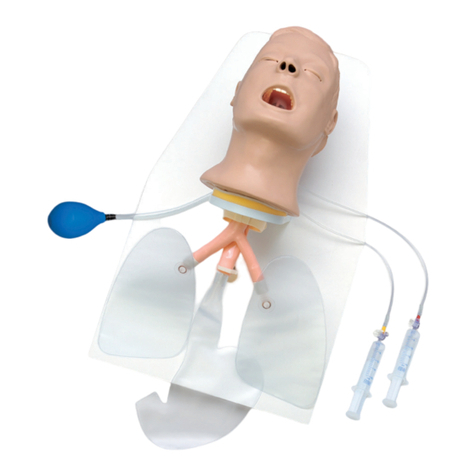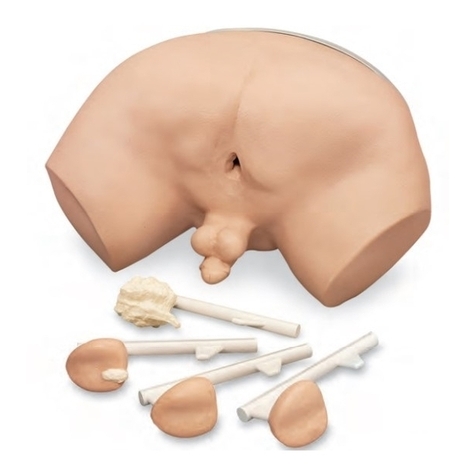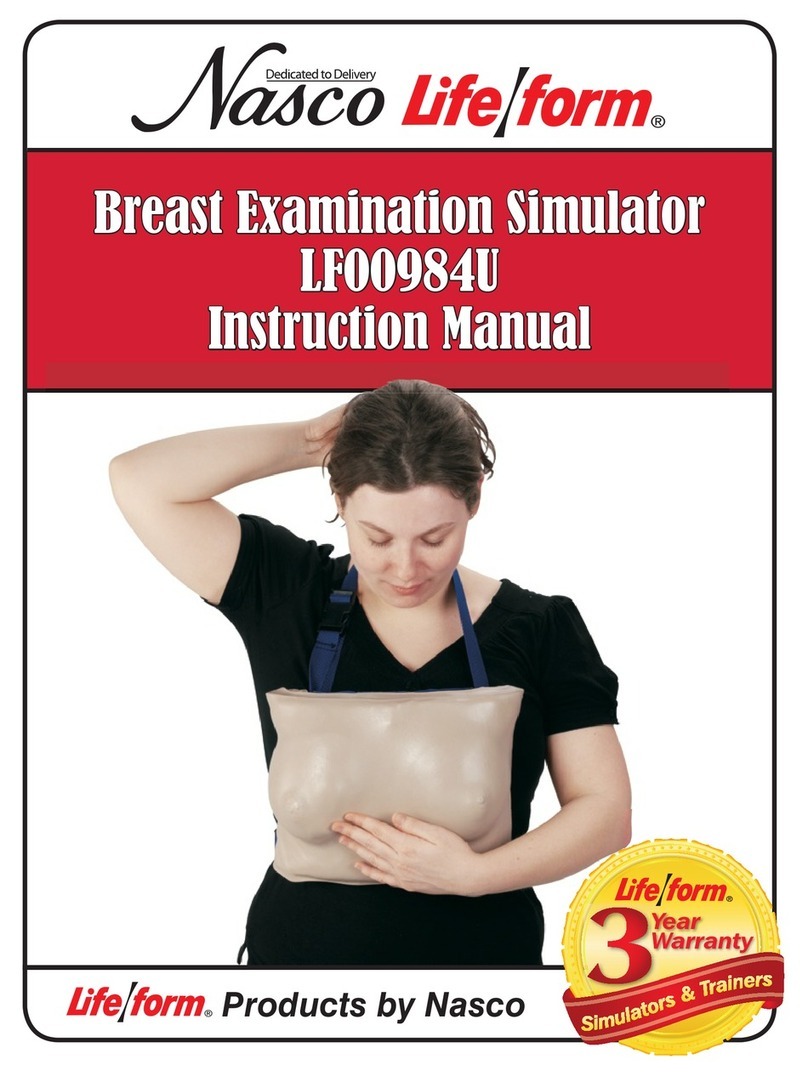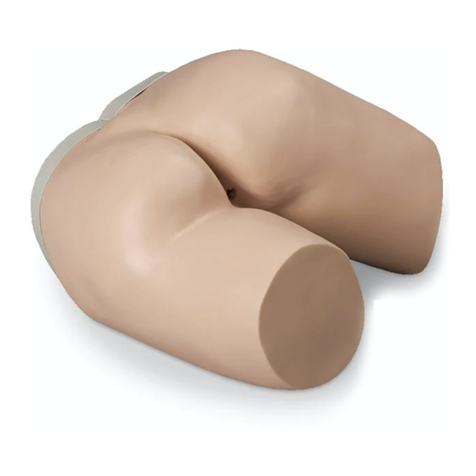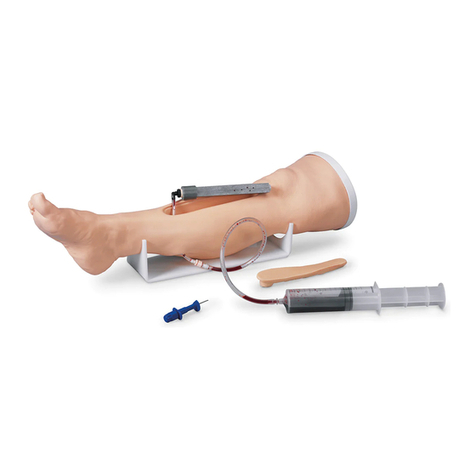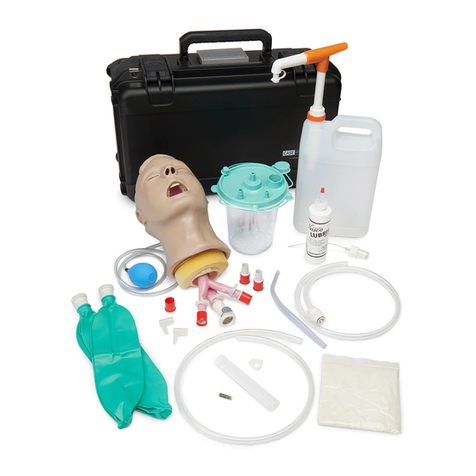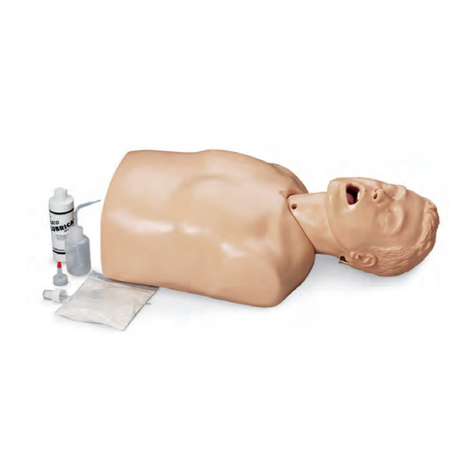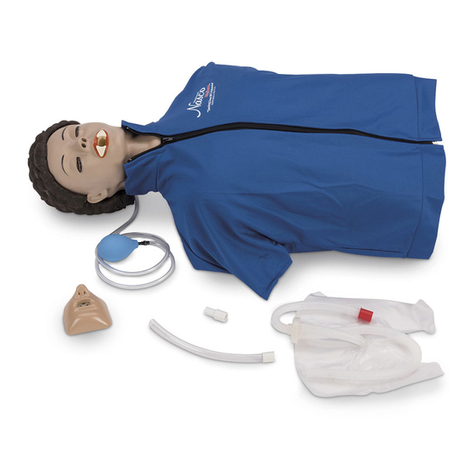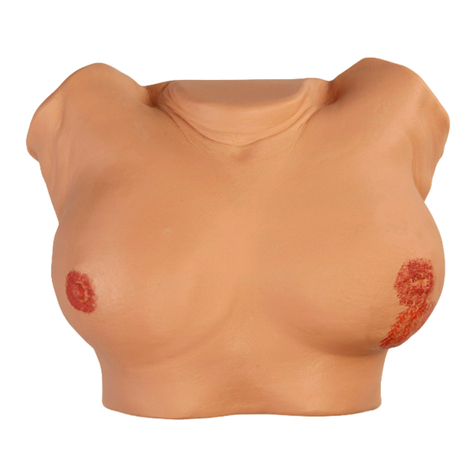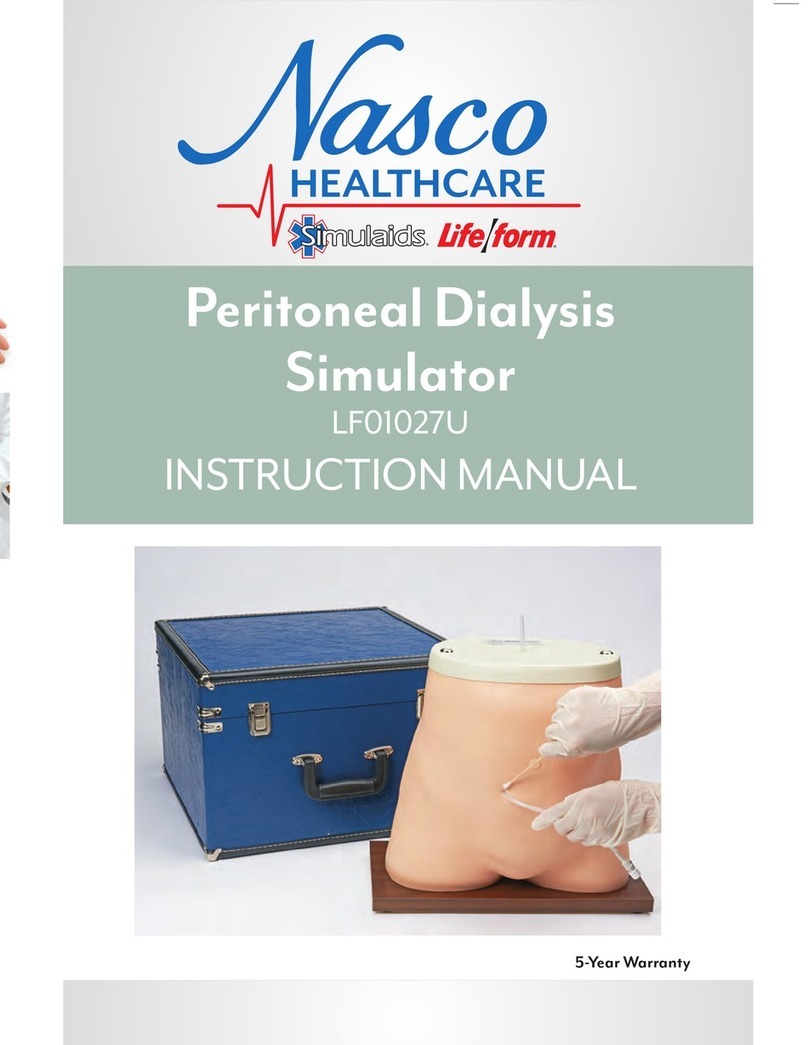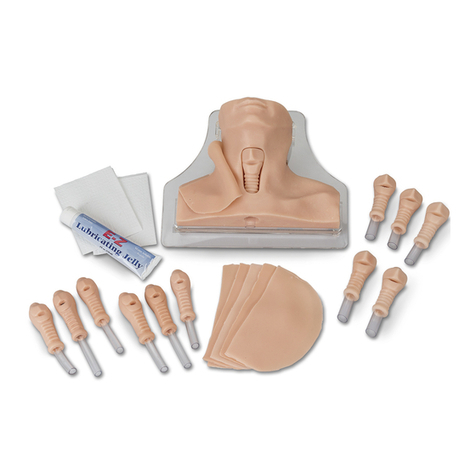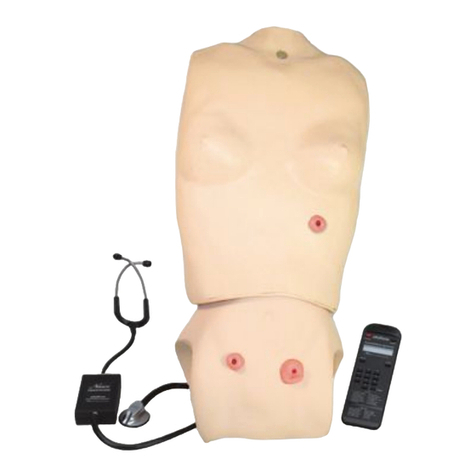ABOUT THE SIMULATOR
The Life/form®Child Intraosseous Infusion/Femoral Access Leg is a dramatic and exciting training aid
designed to demonstrate and simulate Intraosseous Infusion and Femoral Access procedures. It enables
students to learn and practice with incredible accuracy and realism a procedure that has been very
difficult to simulate in the past.
LIST OF COMPONENTS
• Leg
• Femoral Access Site
• 10 Bone Inserts
• 2 Small White Towelettes
• 1 60 cc Syringe
• K-Y Jelly/Surgical Lubricant
• Wax
• ½ oz. Liquid Lubricant
• 2 Leg Skins
• 2 Mixing Bottles w/Blood Mix
• IV Bag
*Resusci®Junior is a trademark of the Laerdal Medical Corporation.
7. The bones have been designed so all four sides can be punctured. To change sides, carefully remove
the bone from the leg and wipe clean. Remove a small piece of wax (provided) and work with your
fingers until soft. Rub the wax piece back and forth across the bone holes until they are sealed.
(See Figure 3.) A thin layer of wax left on the bone surface over the holes will help in sealing. Finish
by applying a thin film of Nasco lubricant over the whole bone. Turn the bone 90° and reinsert into
the leg. (See figure 4.) Do this until all four sides of the bone structure have been punctured, at which
time the bone can be discarded.
Special Note: The Intraosseous Infusion Leg duplicates a procedure that requires a great deal of pres-
sure to be placed on both the simulator and the needle being used. Extreme caution should be taken to
avoid pushing the needle completely through the simulator, injuring the person performing the proce-
dure. Nasco cannot be responsible for injuries resulting from improper use of the simulator.
Figure 2
Figure 3 Figure 4
Figure 1
GENERAL INSTRUCTIONS FOR INTRAOSSEOUS INFUSION USE
1. Slide the waist pin out and remove the right leg of the Resusci® Junior* manikin.
2. Install the new Child Intraosseous Infusion/Femoral Access Leg and put the waist pin back into
place. Lay the Resusci® Junior* manikin on a flat surface, such as a tabletop. Lay towels under the
knees for support and to absorb any overflow.
3. To prepare the blood mixture, combine the red coloring, 1 full tube of K-Y Jelly, and 1¼ cups of tap
water in the pint bottle provided. Shake vigorously for 30 seconds until contents are mixed com-
pletely. After “blood” is mixed, fill the 60 cc syringe by placing the tubing end of the syringe into the
bottle and drawing the “blood” up into the syringe.
4. Wrap the leg skin over the lower leg and fasten it on the backside. (See Figure 1.)
5. Connect the end of the tubing to the bone piece. Apply liquid lubricant to the entire bone, and slide
into position in the leg. (See Figure 2.)
IMPORTANT
6. Make your first needle insertion into the bone and remove the needle stylus. Proper insertion and
pressure applied to the syringe will allow “blood” to flow through the tubing and fill the bone. When
you observe “blood” flowing up through the needle, the bone is completely charged. Each new bone
will need to be charged in this same manner. Correct subsequent insertions will produce an imme-
diate flow of fluid through the needle. To reduce the pressure being placed on the bone, pull the
plunger on the syringe back once verification of the placement has been made. This will decrease
the amount of “blood” that may leak from the bone.
CLEAN UP PROCEDURES
1. Remove and discard any bones that have been charged with blood mixture.
2. Remove leg skins and use paper towels to completely wipe the simulator and remove any “blood” or
lubricating agent.
3. Drain the syringe and discard any of the unused blood mixture.
4. Use clean tap water to flush and clean the syringe and tubing. Allow to dry.
GENERAL INSTRUCTIONS FOR
FEMORAL ACCESS USE
1. Prepare the blood mix by filling one of the pint
bottles with water and shaking until mixed.
(Do not add K-Y Jelly to the femoral blood mix.)
2. Be sure the clamp on the IV bag tubing is
closed, and hang the bag no more than 18"
above the leg. Pour the blood mix from the
bottle into the IV bag.
3. Attach the fitting end of tubing to the access site
tubing. (See Figure 5.)
4. Open the clamp on the IV bag.
5. To charge the vein, make your first needle inser-
tion in the vein, and pull back on the syringe to
remove air from the vein. Repeat until “blood” is
withdrawn. The vein is now charged, and subse-
quent insertions will produce an immediate flow
of “blood.”
Figure 5
HC190001INM21.indd 3-4 2/26/19 10:14 AM
